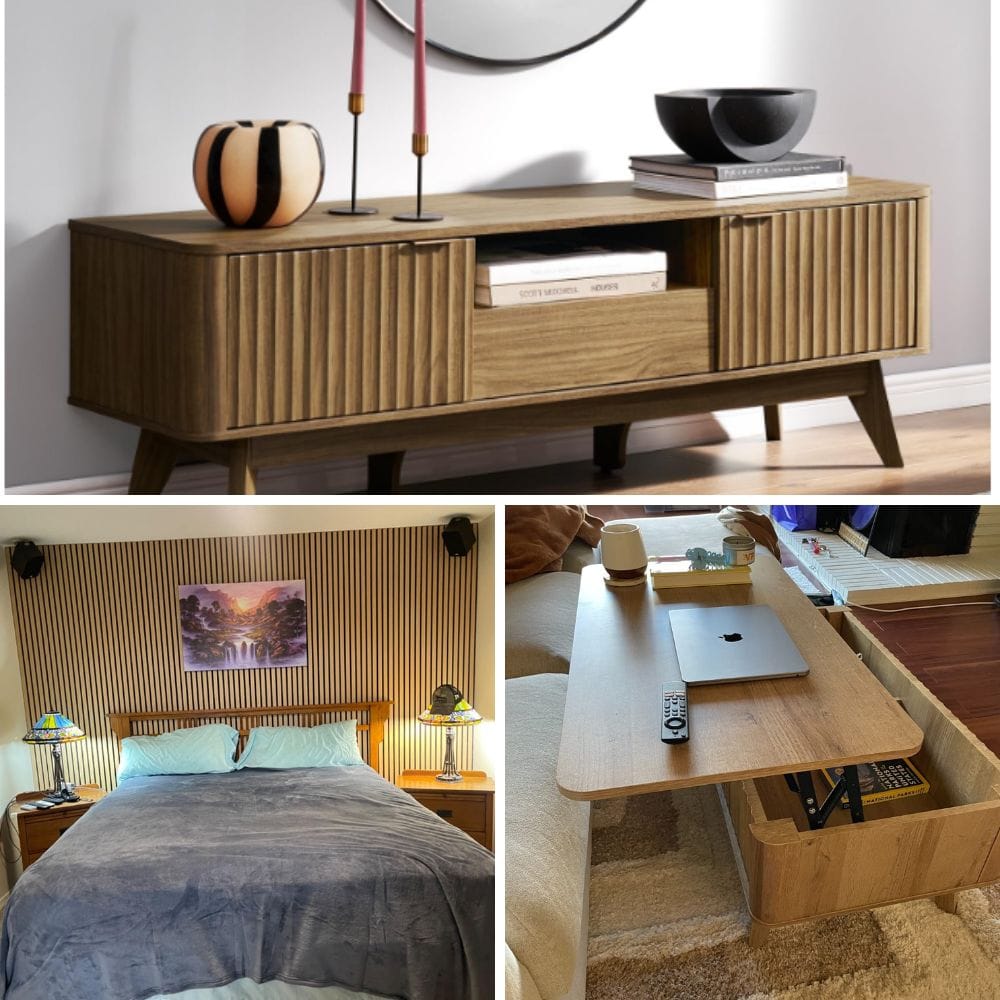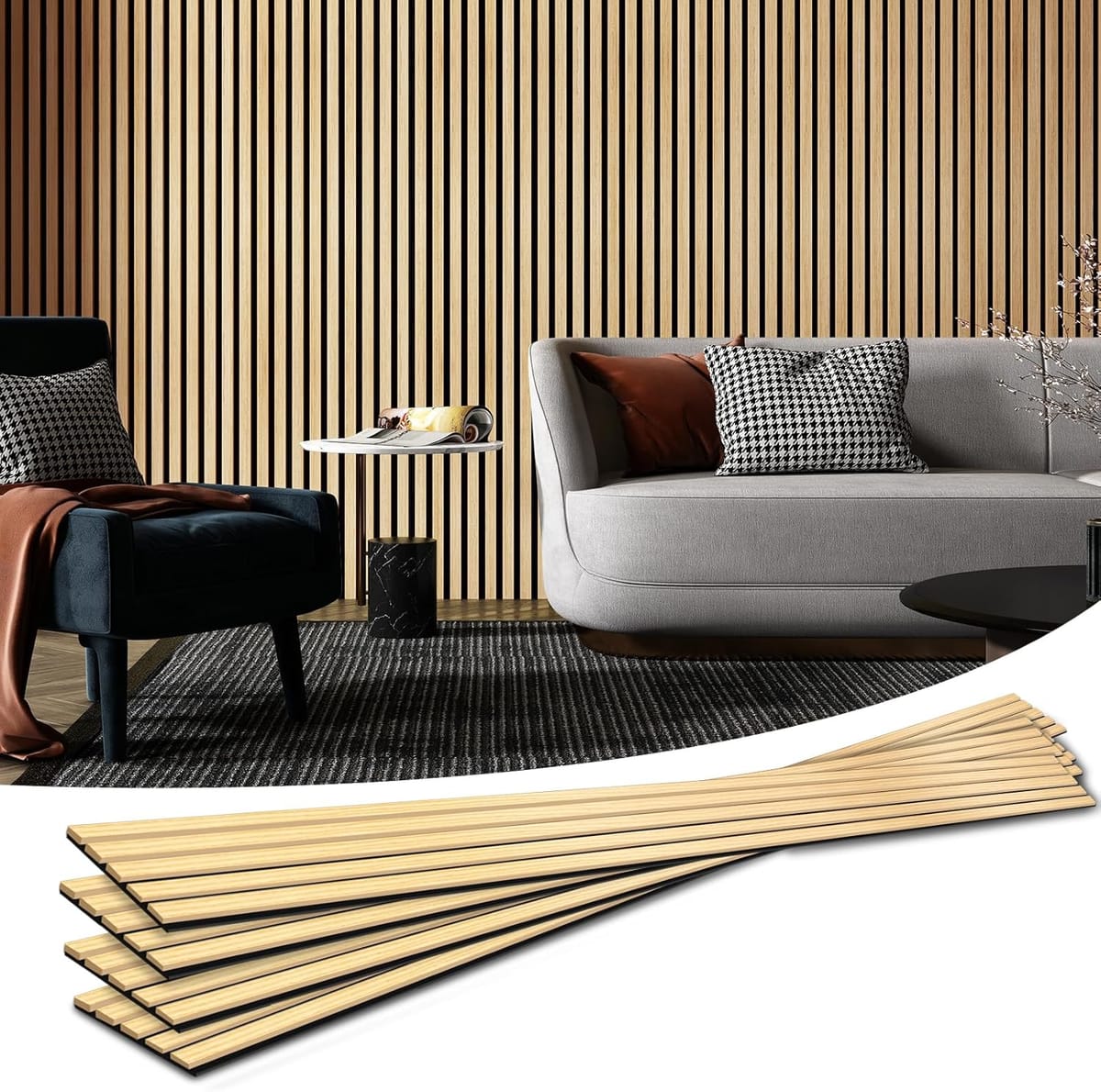Key Takeaways:
- Fluted panels are versatile design elements that add texture and visual interest to various spaces.
- These panels are made from materials like engineered wood fibers, metal, and more, offering durability and low maintenance.
- Fluted panels can be used in residential and commercial spaces to create feature walls, room dividers, and other decorative elements.
Introduction to Fluted Panels

Fluted panels are a popular choice in interior design, known for their vertical lines and textured surface. These panels are used to add character and elegance to plain walls, ceilings, and other surfaces. They are typically made from materials such as engineered wood fibers, metal, and other durable substances, making them a versatile design solution.
The Aesthetics of Fluted Panels
Fluted wall panels are celebrated for their visual appeal. The vertical lines create a sense of height and sophistication, making any space look more refined. Whether used as a feature wall or an accent wall, fluted panels can transform a room with minimal effort.
Materials Used in Fluted Panels
Fluted panels are made from various materials, each offering unique benefits. Engineered wood fibers are a common choice due to their durability and ease of maintenance. Metal-fluted panels are also popular for their modern look and fire-resistant properties. These materials ensure that fluted panels can complement any design theme.
Installation of Fluted Panels
Installing fluted panels is a straightforward process that can be done with minimal effort. These panels can be attached to walls, ceilings, and even furniture like kitchen islands. The installation process typically involves securing the panels with adhesive or screws, making it an ideal solution for both DIY enthusiasts and professionals.
Fluted Panels in Interior Design
Fluted panels are a versatile design element that can be used in various ways. They are often used to create feature walls or accent walls, adding visual interest to otherwise plain surfaces. These panels can also be used as room dividers, providing both functionality and aesthetics.
Adding Visual Interest with Fluted Panels
One of the main benefits of using fluted panels is their ability to add visual interest to a space. The textured surface and vertical lines draw the eye, making the room feel more dynamic. This makes fluted panels an excellent choice for focal points in both residential and commercial spaces.
Durability and Maintenance
Fluted panels are known for their durability and low maintenance requirements. Materials like engineered wood fibers and metal are resistant to wear and tear, making them a long-lasting option. Regular cleaning with a damp cloth is usually sufficient to keep these panels looking their best.
Insulating Properties of Fluted Panels
In addition to their aesthetic appeal, fluted panels offer practical benefits such as insulating properties. These panels can help regulate temperature and reduce noise, making them a functional addition to any space. This is particularly beneficial in commercial spaces where noise reduction is crucial.
Fluted Panels in Outdoor Spaces

Fluted wall panels are not just for interiors; they can also be a striking addition to outdoor spaces. These panels can withstand various weather conditions, making them a durable choice for exterior walls. For example, using water-resistant materials ensures longevity and minimal maintenance. Adding fluted panels to outdoor columns or facades can create a cohesive look that ties the exterior design with the interior, enhancing the overall aesthetic appeal.
Moreover, fluted paneling can be used to create unique outdoor features such as garden walls or patio dividers. These panels can be painted in various colors to match the surrounding environment or left in their natural state for a more rustic look. The versatility of fluted panels allows them to blend seamlessly with different styles, whether modern or traditional, making them a popular choice for outdoor decorative elements.
Fluted Panels in Residential Spaces
Fluted wall panels are increasingly popular in residential spaces due to their aesthetic appeal and functional benefits. These panels can transform a living room, bedroom, or kitchen island into a stylish focal point. Homeowners appreciate the decorative element of fluted panels, adding texture and depth to otherwise plain walls. Additionally, their water-resistant properties make them an excellent choice for areas prone to moisture, such as bathrooms and kitchens.
Beyond their visual appeal, fluted panels offer practical advantages in residential settings. They are easy to install, allowing for quick home renovations without extensive labor. The panels can be painted to match any interior style, providing flexibility in design choices. Moreover, their fire-resistant nature ensures added safety, making them a reliable option for family homes. Whether used as a feature wall or to enhance cabinetry, fluted panels seamlessly blend functionality with elegance.
Environmental Benefits of Fluted Panels
Fluted wall panels are not only visually appealing but also environmentally friendly. Many manufacturers use sustainable materials for fluted wall panel reducing the environmental impact of production. These panels often incorporate recycled content, making them a greener choice for eco-conscious consumers. Homeowners and businesses can contribute to sustainability efforts by opting for fluted panels while enjoying a stylish decorative element.
In addition to their sustainable production, fluted panels offer energy efficiency benefits. Their insulating properties help maintain indoor temperatures, reducing the need for excessive heating or cooling. This energy efficiency translates to lower utility bills and a reduced carbon footprint. In commercial spaces, the use of fluted panels can enhance the building's overall energy performance, making them a smart choice for modern, eco-friendly design.
Acoustic Benefits of Fluted Panels
Fluted wall panels offer many benefits beyond aesthetics, including acoustic advantages. The grooves and ridges in the panels help to diffuse sound waves, reducing noise levels in a room. This makes them an excellent choice for commercial spaces like offices, restaurants, and conference rooms where controlling sound is crucial. For example, installing fluted panels in a busy office can create a quieter, more productive environment.
In residential settings, fluted paneling can be used in home theaters, living rooms, or bedrooms to enhance sound quality. The material and design of the panels can be tailored to meet specific acoustic needs, providing both functional and decorative benefits. Whether you are looking to add fluted panels for their visual appeal or their sound-dampening properties, they offer a versatile solution for various applications.


What materials are fluted panels made from?
Fluted panels are typically made from materials like engineered wood fibers, metal, and other durable substances. These materials offer various benefits, including durability, low maintenance, and fire-resistant properties.
How do you maintain fluted panels?
Maintaining fluted panels is straightforward and requires minimal effort. Regular cleaning with a damp cloth is usually sufficient to keep these panels looking their best. Some fluted panels are also water-resistant, making them easy to clean.
Can fluted panels be used in commercial spaces?
Yes, fluted panels are an excellent choice for commercial spaces. They can be used to create a professional and polished look in areas like lobbies and conference rooms. Their durability and low maintenance make them ideal for high-traffic areas.

Fluted panels are a versatile and stylish design element that can enhance various spaces. Made from materials like engineered wood fibers and metal, these panels offer durability, low maintenance, and aesthetic appeal. Whether used in residential or commercial spaces, fluted panels can add character, elegance, and functionality.











